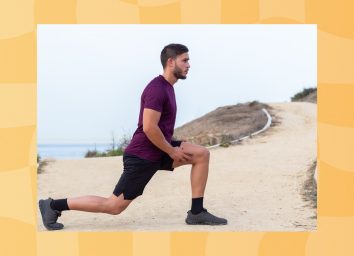10 Best Low-Impact Exercises To Build Endurance
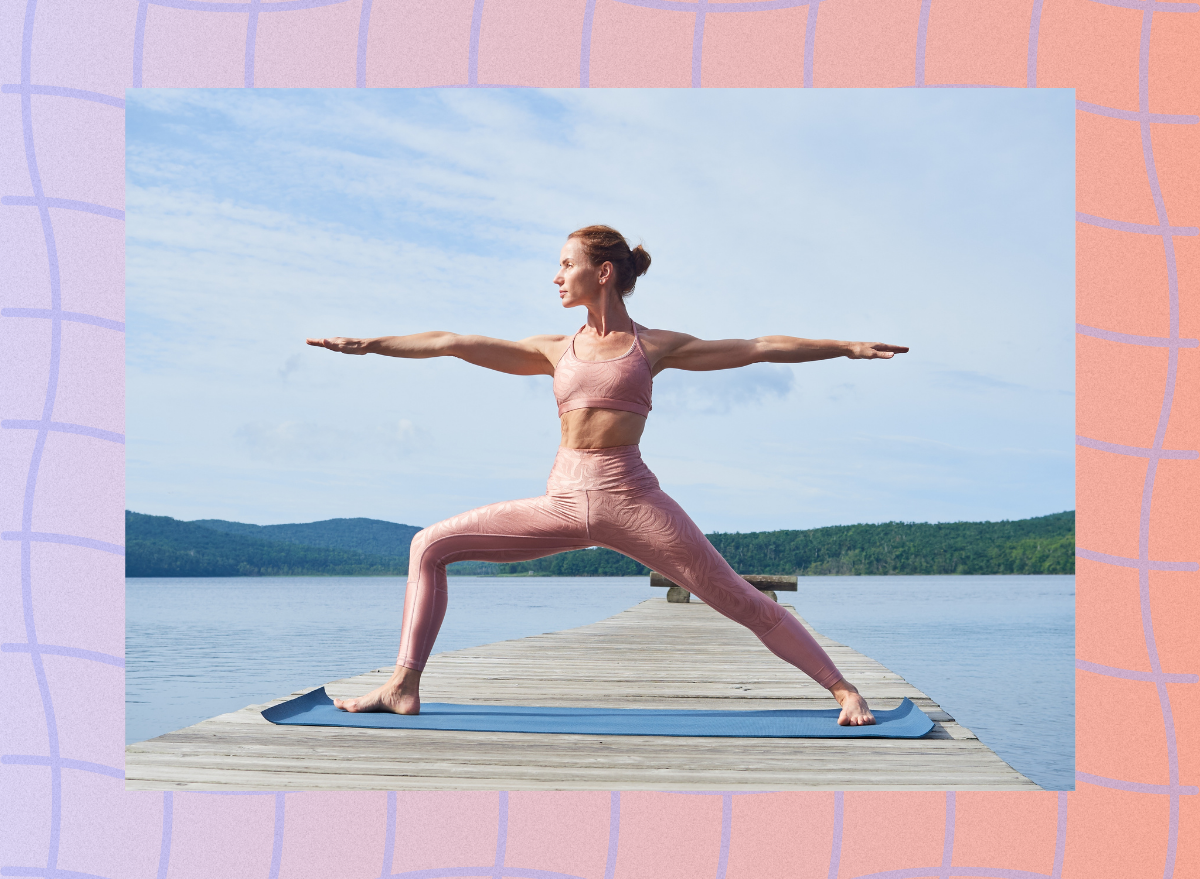
If you're trying to build endurance, low-impact exercises are a stellar place to start. These exercises offer short and long-term benefits for your body and prioritize joint health. In addition, low-impact training can deliver results comparable to high-impact alternatives while being kinder to your joints. Furthermore, low-impact exercises possess a unique power to elevate and sustain your heart rate, making them perfect for cultivating muscular endurance. That's why I'm here to share 10 of my top-recommended low-impact exercises to build endurance.
Whether you're just starting your fitness journey or a seasoned gym enthusiast, integrating low-impact training into your regimen is a smart move. Allow me to guide you through a handful of my favorite low-impact exercises to build endurance. These can be used for weekly workouts, cardio finishers after a strength training workout, or fun and effective active recovery sessions.
Continue reading for the 10 best low-impact exercises to build endurance. And when you're finished, don't miss these 5 Floor Workouts To Regain Muscle Mass as You Age.
Walking

Walking is an excellent choice for a low-impact exercise that effectively boosts endurance. It's accessible to people of all fitness levels and can easily be incorporated into your daily routine.
By maintaining a brisk pace, you can elevate your heart rate and keep it elevated for an extended period, improving cardiovascular health and muscular endurance. Additionally, walking engages multiple muscle groups, including the legs, core, and arms, contributing to overall strength and stamina.
Knock out a 30 to 60-minute walk for a steady-state workout, or ramp up the intensity by performing 10 to 20 rounds of 30-seconds on, 30-seconds off walking intervals at a brisk pace.
Cycling
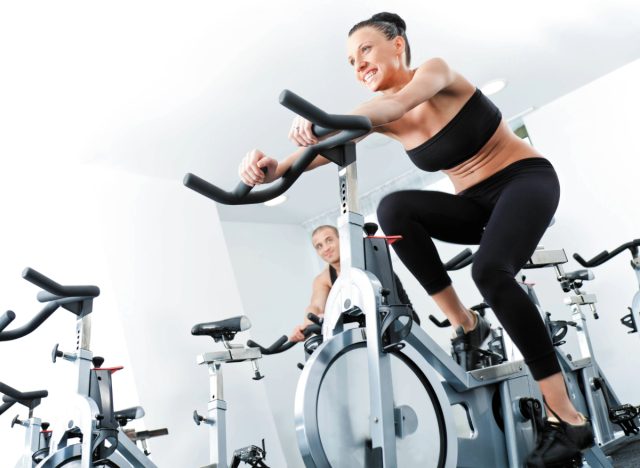
Biking emerges as a stellar choice for a low-impact exercise that significantly enhances lower-body endurance while being gentle on the joints. Whether you opt for outdoor cycling adventures or prefer the controlled environment of a stationary bike indoors, the benefits remain consistent.
Pedaling engages key muscle groups in the legs, including the quads, hamstrings, and calves, fostering strength and endurance development over time. The beauty of biking lies in its versatility; it caters to various fitness levels and preferences, allowing individuals to tailor their workouts to their specific needs.
Hop on a bike for a steady-state workout lasting 30 to 60 minutes to build your endurance base. When you're ready for a new challenge, switch things up with 15 to 20 intervals consisting of 40 seconds of high-intensity effort followed by 20 seconds of an easy pace.
Swimming

Swimming offers a multitude of benefits for full-body muscular endurance, mobility, and joint health. The resistance of the water provides a challenging yet gentle workout for muscles throughout the body, including the arms, legs, core, and back.
Additionally, the buoyancy of water reduces the strain on joints, making swimming a particularly appealing option for individuals with joint issues or those seeking a rehabilitation-friendly workout. Moreover, the range of motion required for swimming strokes enhances flexibility and mobility, promoting overall physical well-being.
Swim continuously for 20 to 30 minutes at a moderate pace, focusing on maintaining steady breathing and rhythm. Alternate between different strokes (freestyle, breaststroke, backstroke) to engage various muscle groups. An interval option would be to perform 10 to 12 rounds of 50-meter sprints, followed by 20-30 seconds of rest between each sprint. Focus on maintaining high intensity during the sprints, using your preferred stroke or alternating between different strokes for variety.
Rower
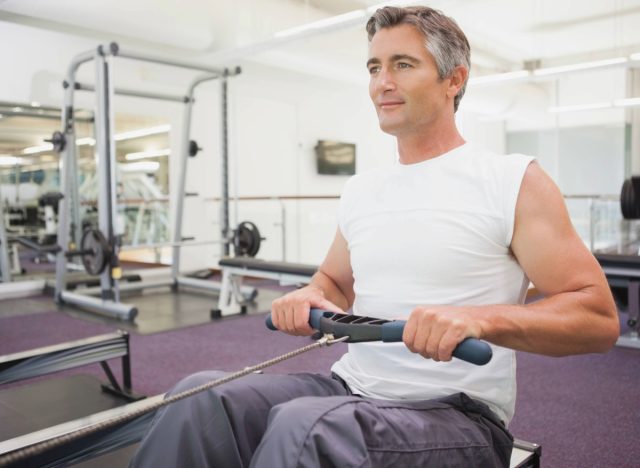
A rower is a powerhouse when it comes to boosting full-body endurance while offering the benefits of low-impact exercise for cardio workouts. This versatile machine simultaneously engages multiple muscle groups, including the legs, core, back, and arms, providing a comprehensive workout that improves strength and stamina.
Rowing is gentle on the joints, making it an excellent option for individuals with joint issues or those seeking a low-impact alternative to high-intensity cardio exercises. The fluid, rhythmic motion of rowing promotes cardiovascular health and endurance while minimizing the risk of injury, allowing individuals to push their limits without undue strain.
For an endurance-building workout, row continuously for 20 to 30 minutes at a moderate intensity, aiming to maintain a consistent stroke rate and rhythm throughout. Want a fun interval workout? Alternate between 1:00 of rowing at a high intensity (aim for a stroke rate of 26 to 30 strokes per minute) and 1:00 of rowing at a recovery pace (lower stroke rate, relaxed effort) for a total of 10 to 15 rounds.
SkiErg
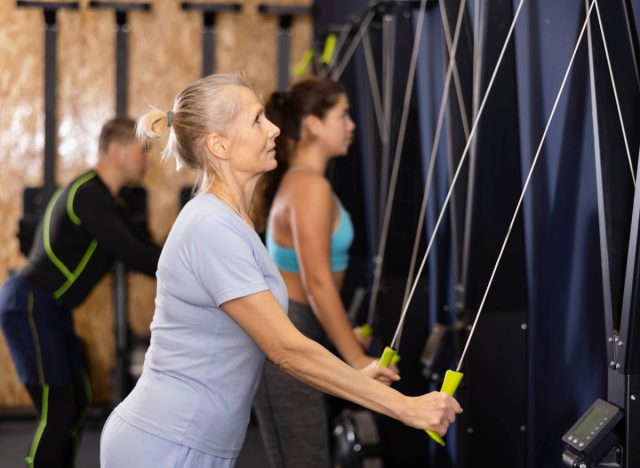
The SkiErg offers unique workouts. This machine mimics the double-pole motion of cross-country skiing, engaging the upper-body muscles in a coordinated and dynamic manner. By incorporating the arms, shoulders, and core in the pulling motion, the SkiErg provides a comprehensive workout that improves strength, stability, and endurance in these muscle groups.
The SkiErg's smooth and controlled movement minimizes joint stress, making it an ideal option for individuals seeking a low-impact alternative to traditional cardio exercises.
To build a strong upper-body endurance base, ski continuously for 20 to 30 minutes at a moderate intensity, maintaining a steady rhythm and focusing on engaging your arms, shoulders, and core throughout each stroke. Interval training offers a fun twist on cardio sessions. Alternate between 30 seconds of high-intensity skiing (aim for a fast pace and strong arm engagement) and 30 seconds of rest or easy skiing for a total of 10 to 15 rounds.
Elliptical
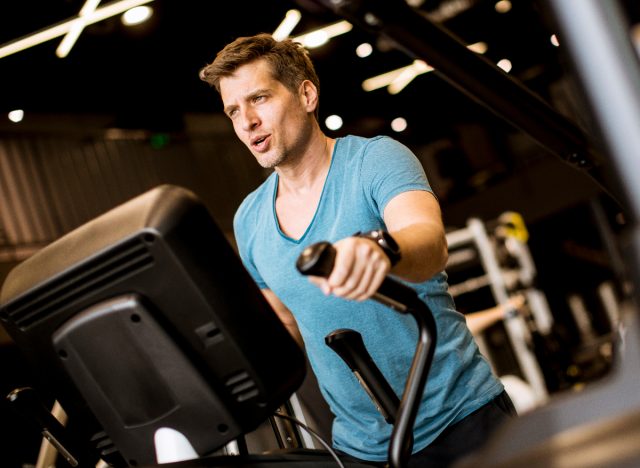
Ellipticals are exceptionally accessible and versatile for low-impact workouts, making them ideal for building muscular endurance and providing alternatives to high-impact cardio exercises.
These machines offer a smooth, gliding motion that mimics the natural movement of walking, jogging, or running without the impact on joints that comes with activities like running on pavement or jumping. This makes ellipticals suitable for individuals of all fitness levels and those with joint issues or injuries.
Additionally, ellipticals typically have adjustable resistance levels and incline settings, allowing users to tailor their workouts to their fitness goals and preferences.
Maintain a steady pace for 30 to 45 minutes at a moderate intensity. Focus on keeping your heart rate elevated while engaging your legs, arms, and core muscles throughout the workout. Alternate between high-intensity intervals and recovery periods. For example, sprint at maximum effort for one minute, followed by two minutes of easy-paced recovery. Repeat this cycle for a total of 20 to 30 minutes.
Yoga
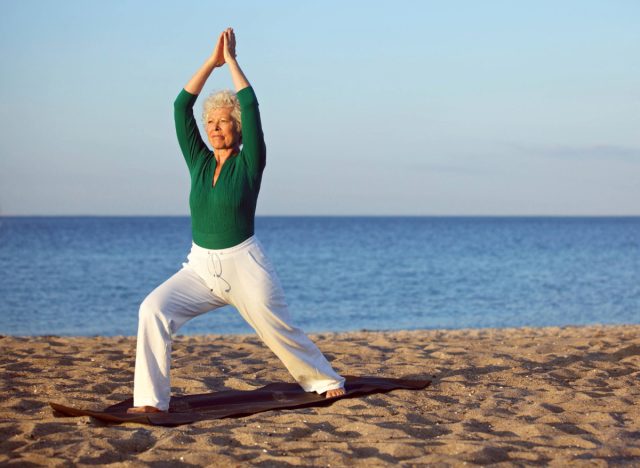
Yoga gives a whole different perspective on building endurance compared to cardio exercises. Yoga presents the unique benefits of improving mobility while improving isometric strength and conditioning for your muscles.
You'll move in and out of positions as you flow through various poses requiring mobility and flexibility, and if you've done yoga before, you already know how tough it is to hold static positions, requiring great amounts of isometric strength and endurance. Beyond improving endurance, I advocate for clients and athletes to use yoga as one of the best forms of active recovery to jumpstart the day!
Flow through your favorite yoga poses, holding each position for a few deep inhale and exhale breath cycles. Aim to accumulate 10 to 30 minutes of continuous, active movement.
Alternating Lunges
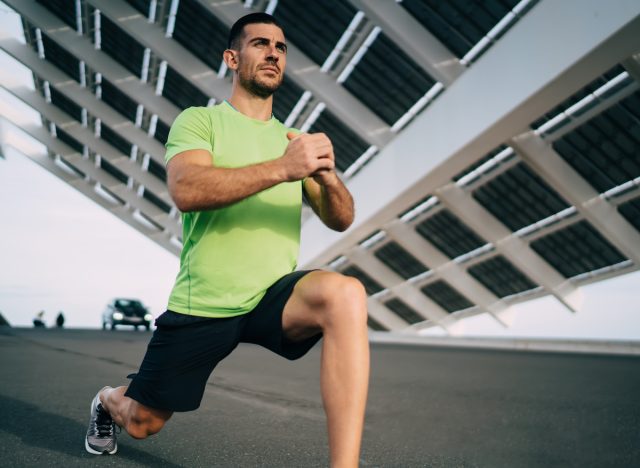
Alternating lunges are a standout low-impact exercise renowned for their ability to cultivate strength and endurance in the lower body. Engaging muscles across the legs, hips, and glutes, lunges offer a solid workout option without subjecting joints to undue stress.
Their unilateral nature sets alternating lunges apart, which uniquely challenges stability and bolsters balance. As each leg independently supports the body's weight, it strengthens muscles and hones proprioception and coordination—key elements of holistic fitness.
Perform three to four sets of 15 to 20 reps per side using only your body weight. To add variety, incorporate circuit intervals of alternating reverse lunges between 30 seconds of work and 30 seconds of rest.
Bodyweight Squats
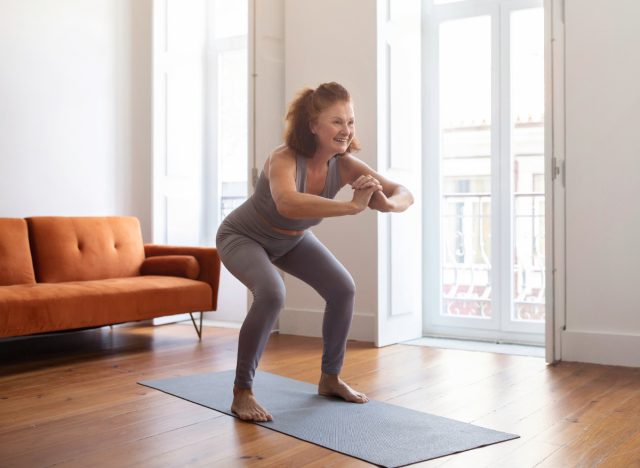
Bodyweight squats target the quads, hamstrings, and glutes, as they provide an effective workout without the need for equipment or added strain on the joints. By incorporating higher rep sets or intervals, bodyweight squats become a potent tool for building muscular endurance in these muscle groups.
Introducing variations such as pauses and tempo reps further amplifies the muscular endurance benefits, as these techniques challenge muscles to work harder and for longer durations. Moreover, they enhance mobility by promoting proper squat form and depth, contributing to overall flexibility and range of motion.
Complete three to four sets of 15 to 20 reps using only your body weight. To add variety, incorporate circuit intervals.
Pushups
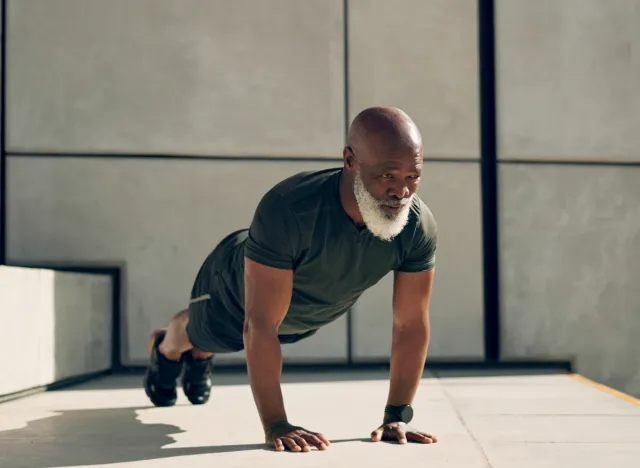
Pushups are a quintessential upper-body compound exercise renowned for their effectiveness in building muscular endurance, particularly in the triceps, shoulders, chest, and core. What makes them truly versatile is their adaptability to various fitness levels; they can be modified to accommodate beginners and seasoned athletes alike.
Introducing variations such as tempos and pauses further intensifies the endurance challenge, requiring muscles to work harder and for longer durations. To enhance endurance, aim for higher rep sets or incorporate pushups into circuit intervals, allowing for brief periods of rest between sets to maximize performance.
Perform three to four sets of 15 to 20 reps using only your body weight. To add variety, incorporate circuit intervals.



